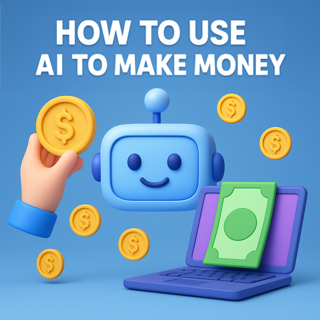Yes, you can use AI to become rich, but it’s important to approach it with the right mindset. Artificial Intelligence isn’t a shortcut to effortless wealth. Instead, it acts as a force multiplier, strengthening productivity, lowering operational costs, and enabling scalable systems that can generate sustainable income. Today, entrepreneurs and digital professionals are leveraging AI in powerful ways to grow their revenue, enter new markets, and operate more efficiently than ever before.
AI for eCommerce Optimization
The eCommerce space has seen a major transformation with the integration of AI-driven tools. Online sellers are using intelligent algorithms to gain a competitive edge in areas like pricing, customer engagement, and content creation. AI can automatically adjust product prices in real-time based on market trends, demand fluctuations, and competitor activity, a practice known as dynamic pricing. Additionally, when shoppers abandon their carts, AI tools can trigger customized follow-up emails or offers, improving the chances of recovering lost sales.
Content creation is another area where AI shines. Instead of writing product descriptions manually, sellers are turning to platforms like Shopify Magic or Copy.ai to generate compelling, SEO-friendly copy in seconds. AI also powers recommendation engines that tailor product suggestions to individual shoppers based on browsing and purchase behavior, leading to better engagement and higher conversion rates. These features collectively help eCommerce stores increase their revenue without increasing workload.
AI-Powered Customer Service Chatbots
Customer support is often a significant cost center for businesses, especially those serving a global audience. AI-powered chatbots are changing that narrative by offering around-the-clock assistance without the need for large support teams. Tools like Tidio and Chatfuel can engage with customers instantly, handling everything from answering FAQs to assisting with order tracking.
Beyond providing basic support, these bots can also gather key information to qualify leads automatically, sending only the most promising prospects to a human sales representative. This saves time and ensures higher conversion rates. By improving response time, reducing the need for live agents, and enhancing customer satisfaction, AI chatbots help businesses streamline operations while significantly cutting costs.
Sales Automation with AI
In the realm of digital sales, time is money, and AI tools are helping teams save both. Many professionals are now using AI to automate their cold outreach campaigns, crafting personalized emails that feel human while being generated in bulk. Tools like Instantly.ai and Smartwriter.ai allow businesses to initiate contact with hundreds of potential leads at once, without compromising personalization.
AI also enhances the lead nurturing process by sending timely follow-up messages, offering upsell suggestions based on customer behavior, and managing retargeting campaigns that re-engage visitors who didn’t convert the first time. Platforms such as GoHighLevel combine these capabilities into a single system, allowing sales teams to work more efficiently. The result is faster deal cycles, more closed sales, and increased revenue, all without needing to expand the team.
AI Analytics for Smarter Business Decisions
In today’s data-driven economy, success depends on the ability to make quick, informed decisions, and that’s where AI-powered analytics platforms come in. Instead of spending hours poring over spreadsheets, business owners are turning to tools like Pecan.ai and Tableau with Einstein AI to gain real-time insights. These platforms use machine learning to identify trends, forecast future performance, and visualize customer behavior.
For example, a business might use sentiment analysis tools like MonkeyLearn to gauge how customers feel about a new product launch. Insights like these help companies adjust their messaging, improve their offerings, and stay ahead of the competition. With the right analytics tools, entrepreneurs can spot opportunities early, avoid costly mistakes, and refine their strategies for maximum profitability.














